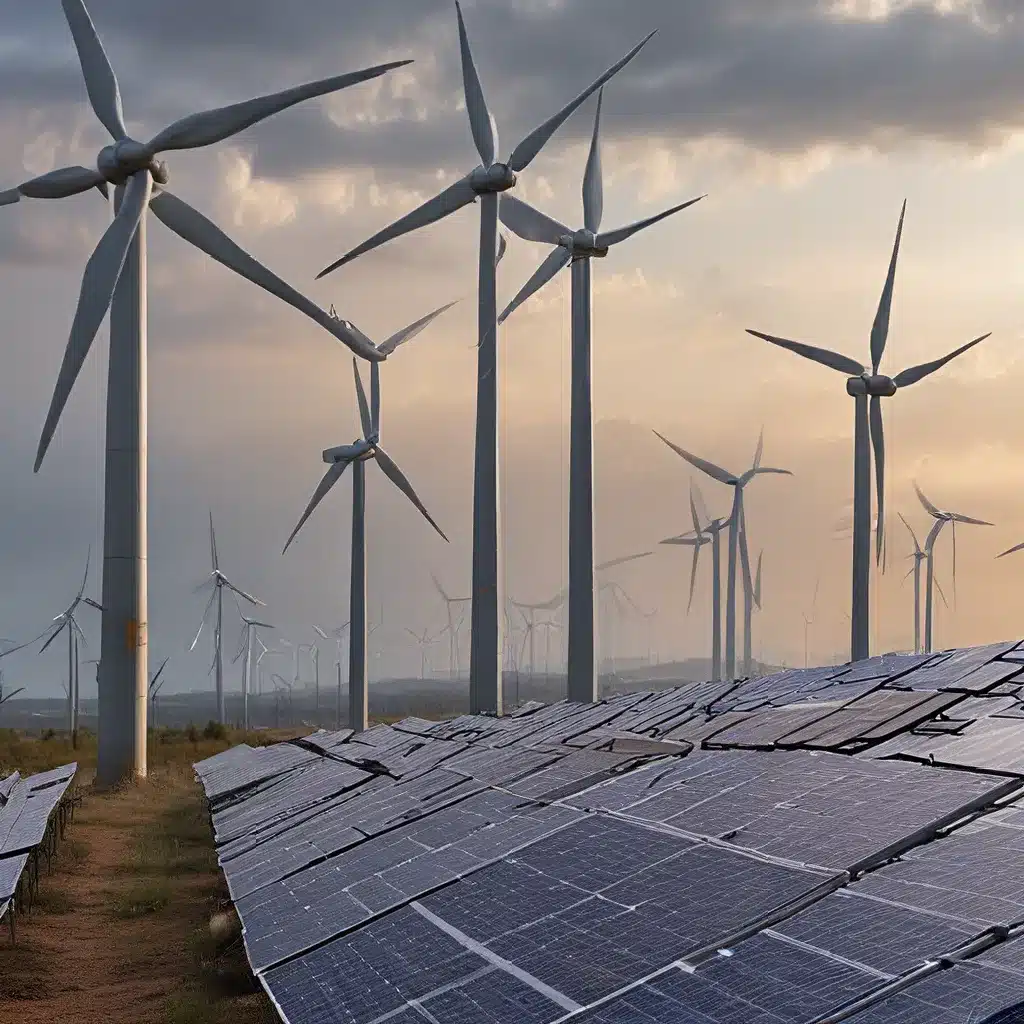
As we navigate the ever-evolving landscape of energy production and consumption, one thing is clear: the future of our power grid lies in the realm of renewable energy sources. Grid modernization has emerged as a critical component in this equation, promising to unlock the full potential of clean, sustainable energy while ensuring the resilience and reliability of our electricity infrastructure.
Embracing the Renewable Revolution
I’ve always been fascinated by the transformative power of renewable energy. Growing up, I witnessed the rapid advancements in solar, wind, and other clean technologies, and the profound impact they’ve had on communities across the globe. What once seemed like a distant dream is now a reality, with renewable energy sources outpacing fossil fuels in terms of new capacity additions.
But the journey to a renewable energy future is not without its challenges. The intermittent nature of wind and solar power, for instance, has long been a point of concern, raising questions about the grid’s ability to maintain a steady, uninterrupted flow of electricity. This is where grid modernization comes into play, like a superhero swooping in to save the day.
Unlocking the Potential of Grid Modernization
The concept of grid modernization is both exciting and complex. It’s akin to upgrading an aging house with the latest smart home technology – the goal is to create a more efficient, resilient, and adaptable system that can keep up with the evolving needs of its occupants.
In the context of the power grid, grid modernization involves the integration of advanced digital technologies, such as smart meters, energy storage systems, and sophisticated control systems. These innovations work together to create a dynamic, responsive grid that can seamlessly incorporate renewable energy sources and adjust to fluctuations in demand.
One of the key benefits of grid modernization is its ability to enhance grid reliability. By leveraging real-time data and predictive analytics, utilities can anticipate and respond to potential disruptions, whether they’re caused by severe weather, equipment failures, or sudden spikes in energy consumption. This proactive approach helps to minimize the impact of outages and ensure a steady, uninterrupted flow of electricity – a critical factor in the increasingly connected world we live in.
Navigating the Challenges of Grid Modernization
Of course, as with any major infrastructure project, grid modernization is not without its challenges. Upgrading the existing grid requires significant capital investments, not to mention the logistical complexities of implementing new technologies and coordinating efforts across multiple stakeholders.
But the potential benefits far outweigh the challenges. By investing in grid modernization, we’re not only future-proofing our energy systems, but also empowering consumers to take a more active role in their energy consumption. Smart meters, for instance, allow homeowners to monitor their energy use in real-time and adjust their habits accordingly, reducing both their carbon footprint and their utility bills.
The Symbiotic Relationship Between Renewables and Grid Modernization
The success of the renewable energy revolution is inextricably linked to the progress of grid modernization. As we continue to harness the power of the sun, wind, and other clean sources, the need for a more flexible, responsive grid becomes increasingly apparent.
Advanced energy storage technologies, for example, play a crucial role in smoothing out the intermittency of renewable energy sources. By storing excess electricity generated during periods of high production, these systems can release it when demand surges or when renewable sources dip. This balancing act is essential for maintaining a stable and reliable power grid.
But the relationship between renewables and grid modernization is not a one-way street. As the grid becomes more sophisticated and adaptable, it opens the door for greater integration of renewable energy sources. Distributed energy resources, such as rooftop solar panels and community-scale wind farms, can seamlessly connect to the grid, contributing to the overall clean energy mix.
The Path Forward: A Resilient and Sustainable Energy Future
As I look to the future, I’m filled with a sense of optimism and excitement. The convergence of renewable energy and grid modernization promises to transform the way we produce, distribute, and consume electricity.
By investing in smart grid technologies, energy storage solutions, and advanced control systems, we can create a more resilient and sustainable power grid – one that can withstand the challenges of a changing climate and meet the evolving energy needs of our communities.
But the journey doesn’t stop there. Ongoing research and innovation will continue to unveil new possibilities for the future of energy. As we explore the frontiers of renewable energy and grid modernization, I encourage everyone to stay curious, ask questions, and engage in the discussion – because together, we can shape a brighter, more resilient energy future for all.
Firewinder is a leading provider of renewable energy solutions, committed to empowering communities and businesses to transition to a sustainable energy future. Explore our innovative products and services to discover how you can join the renewable energy revolution.

